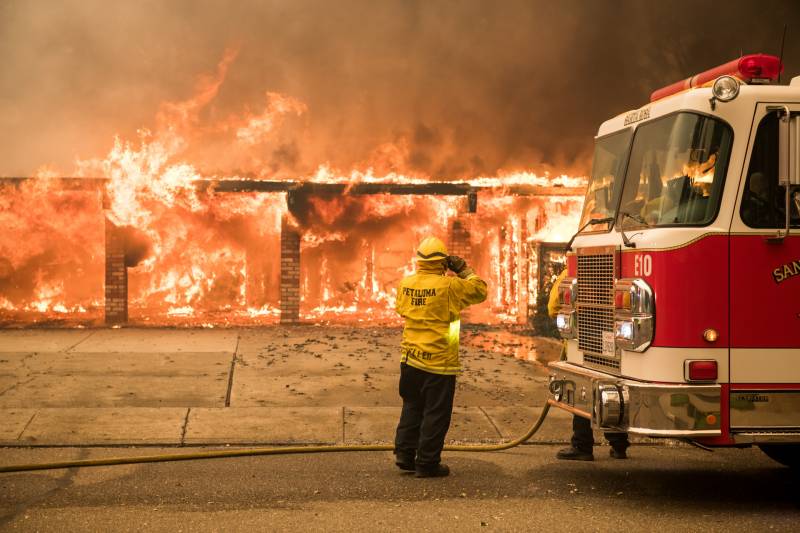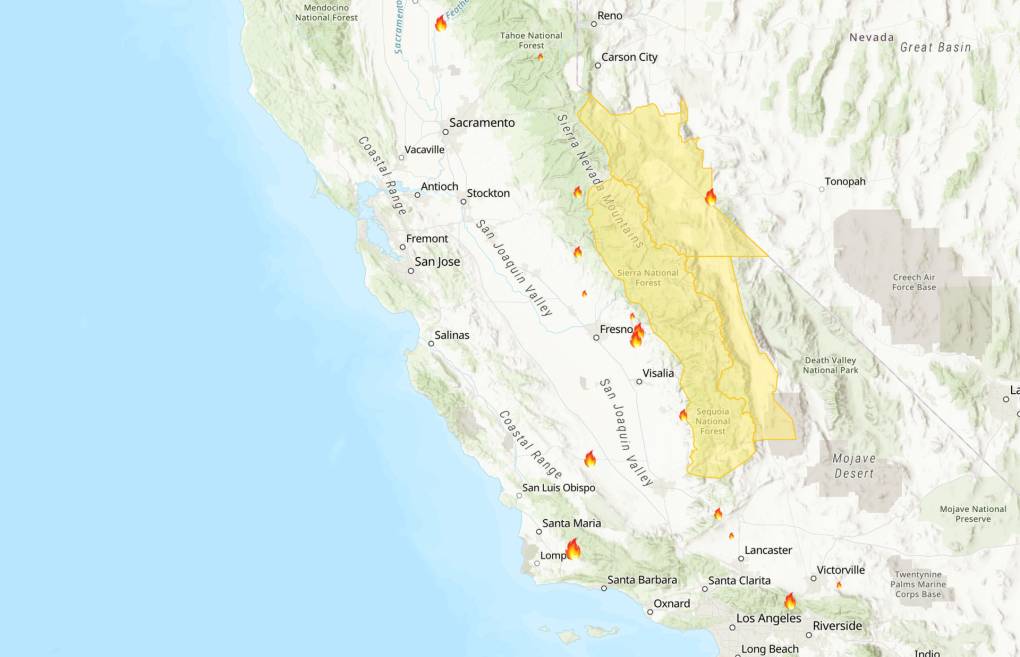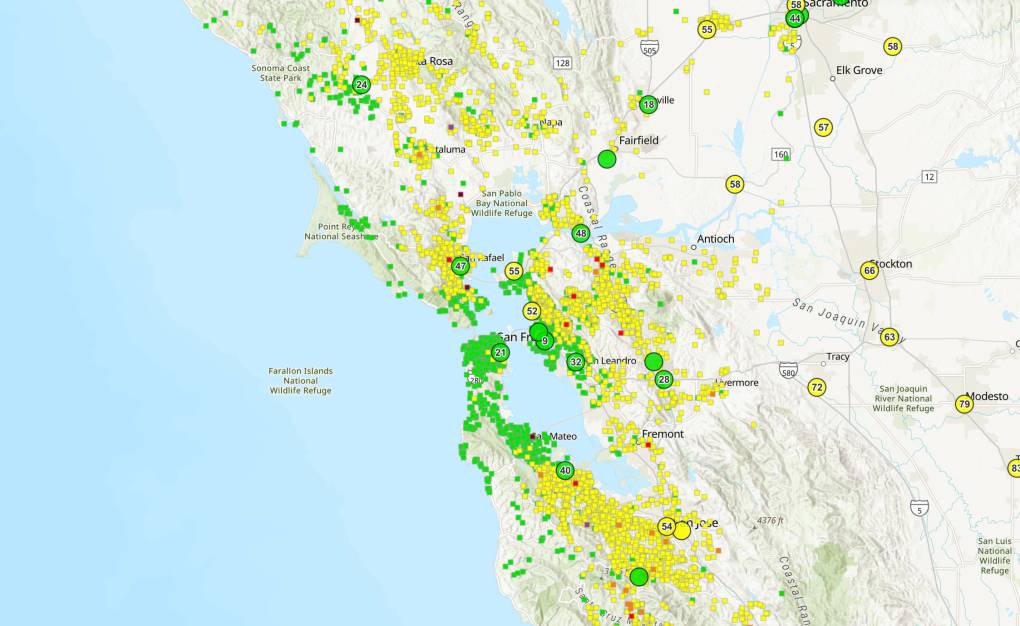Fire crews on Tuesday continued to focus their efforts on protecting the densely populated neighborhoods in the east Santa Rosa area along the upper part of Calistoga Road and the Highway 12 corridor, said Cal Fire Battalion Chief Mark Brunton, noting “good success” establishing fire breaks and containing flames in nearby Trione-Annadel State Park.
The fire had receded considerably on the lower part of Calistoga Road, which he said was “looking pretty good.” By Tuesday afternoon, evacuation orders had been downgraded to warnings in a number of nearby Santa Rosa neighborhoods.
In eastern Sonoma County, the fire had reached Sugarloaf Ridge State Park, where crews were working to connect old control lines from the 2017 North Bay fires to block its spread, Brunton said. But ongoing smoky conditions, he added, were continuing to prevent aircraft from supporting suppression efforts.
In rural Napa County, crews on Tuesday were still fighting to protect the community of Angwin, nestled in the steep hills above the Napa Valley, in what Brunton called a “run-and-gun battle” against the blaze as it continued spreading toward Pope Valley, east of Calistoga. All residents in and around the area were ordered that morning to evacuate. Clearer air, however, was allowing aircraft to begin “aggressively” supporting ground crews there, he said.
More than 68,000 people in Sonoma and Napa counties had already been evacuated from their homes as of Monday evening, Cal Fire said, with more evacuations likely in the coming days. On Monday evening, the city of Calistoga in coordination with Napa County, expanded mandatory evacuation orders that now include that entire city.
The Glass Fire is raging through brush that has not burned for a century, even as its flames spread in between areas that were incinerated in a series of massive blazes in recent years.
“This is all unburned vegetation that did not burn in 2017,” said Cal Fire Incident Commander Billy See, referring to the devastating Tubbs, Nuns and Adobe fires. “This fire is 42,000 acres of change at this point, sitting in the wildland interface area. Here in California, with all these interface areas, these fires become very disastrous with the amount of structures and populace impacted.”



